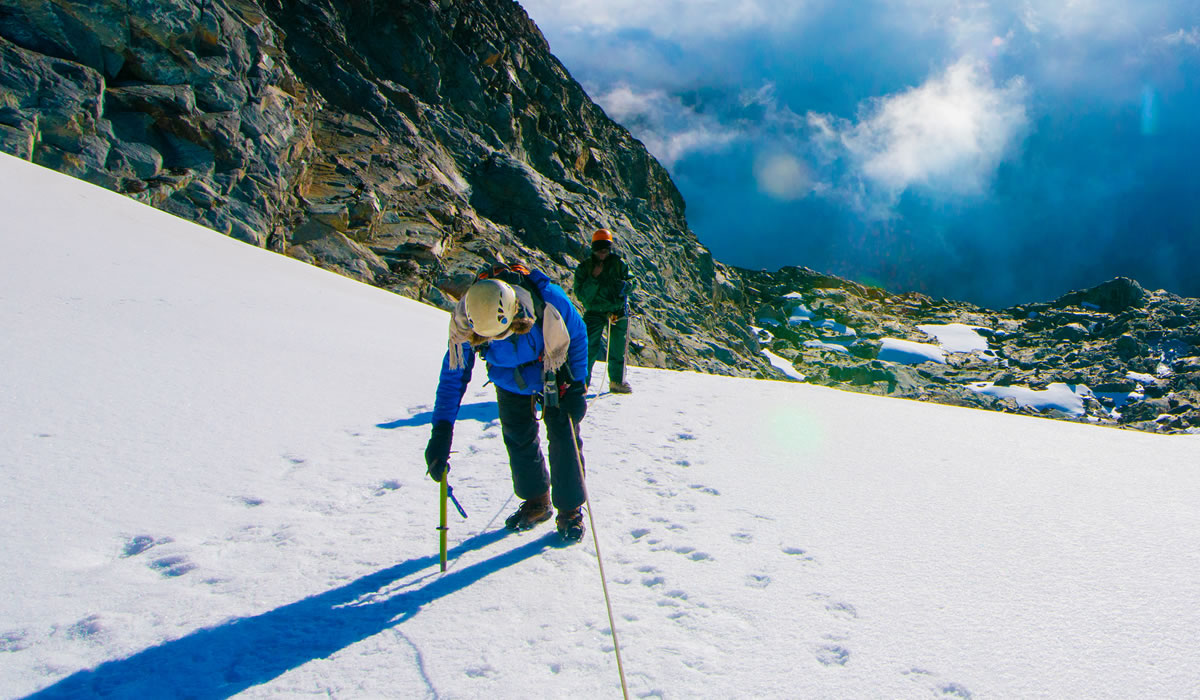Rwenzori Mountains National Park, located in western Uganda along the border with the Democratic Republic of Congo, is one of Africa’s most striking natural wonders. Covering an area of 996 square kilometers, the park encompasses the Rwenzori mountain range, often referred to as the “Mountains of the Moon,” famed for its snow-capped peaks, glaciers, and rugged alpine terrain. The park’s unique combination of high-altitude ecosystems, glacial landscapes, and rich biodiversity has earned it recognition as a UNESCO World Heritage Site. For trekkers, wildlife enthusiasts, and nature lovers, Rwenzori Mountains National Park offers unforgettable adventures and stunning scenery that rivals any destination in Africa.

Scenic Landscapes and Ecosystems
The Rwenzori Mountains rise dramatically from the surrounding savannah and rainforest, with peaks exceeding 5,000 meters above sea level. The highest peak, Mount Stanley, reaches 5,109 meters and is the third-highest peak in Africa. The park’s landscapes are varied, encompassing alpine meadows, bamboo forests, montane rainforests, and glacial zones. Glacial rivers, waterfalls, and lakes punctuate the terrain, providing breathtaking scenery and essential water sources for the park’s flora and fauna.
The park’s ecosystems are organized along distinct altitudinal zones. The lower montane forests, typically found between 1,000 and 2,500 meters, feature dense vegetation with a variety of tree species, ferns, and epiphytes. Between 2,500 and 3,500 meters, bamboo and heath zones dominate, while alpine zones above 3,500 meters host unique vegetation adapted to cold conditions, including giant lobelias and senecios. The glacial peaks and snowfields above 4,500 meters form a dramatic and rare landscape in equatorial Africa.
Wildlife in Rwenzori Mountains National Park
Rwenzori Mountains National Park is home to a diverse range of wildlife, adapted to the park’s varied altitudinal zones. Mammals include forest elephants, buffaloes, leopards, giant forest hogs, bushbucks, and several species of monkeys, such as vervet monkeys, red-tailed monkeys, and black-and-white colobus monkeys. While some wildlife inhabits the lower forest zones, other species are adapted to higher elevations, making the park an exciting destination for both lowland and highland wildlife spotting.
Birdlife in the Rwenzori Mountains is particularly impressive, with over 200 species recorded. The park is known for endemic and rare species such as the Rwenzori turaco, Rwenzori batis, and the Albertine owlet. High-altitude zones are home to alpine birds, while lower forests attract sunbirds, hornbills, and various raptors. Birdwatching is a rewarding activity throughout the year, with early mornings offering the best sightings and opportunities for photography.
The park also harbors unique amphibians and reptiles, including several endemic frog species and reptiles adapted to high-altitude environments. Invertebrates, including butterflies and insects, contribute to the park’s rich biodiversity, especially in montane forest and riverine zones.
Activities in Rwenzori Mountains National Park
Rwenzori Mountains National Park is renowned for adventure tourism, particularly trekking, mountaineering, and nature exploration.
Mountain Trekking and Mountaineering
The primary attraction in the park is trekking to the high peaks. Treks typically last 6 to 8 days, depending on the chosen route and summit goals. The most popular route is the Central Circuit, which passes through diverse ecosystems, including montane forests, bamboo zones, alpine meadows, and glaciers. Trekkers are rewarded with spectacular vistas, waterfalls, and the opportunity to summit Mount Stanley or Mount Speke.
Trekking in the Rwenzori Mountains requires physical fitness, as trails are steep, rugged, and often muddy due to high rainfall. Guided treks are mandatory, with experienced guides ensuring safety, navigation, and support throughout the journey. Porters and camping teams accompany trekkers, carrying supplies and setting up campsites at designated rest points.
Hiking and Nature Walks
For those seeking less challenging adventures, the park offers day hikes and nature walks in lower montane zones. Trails lead through lush forests, bamboo groves, and river valleys, providing opportunities to observe wildlife, endemic plants, and bird species. These walks are ideal for visitors with limited time or those who prefer moderate physical activity while experiencing the park’s natural beauty.
Birdwatching and Wildlife Photography
Rwenzori Mountains National Park is a paradise for birdwatchers and wildlife photographers. Guided birding tours focus on spotting endemic and rare species in both lowland forests and alpine zones. Wildlife photography is also rewarding, with opportunities to capture dramatic landscapes, waterfalls, endemic plants, and diverse fauna in their natural habitats. Sunrise and sunset provide the best lighting for photography, illuminating the rugged terrain and mist-covered peaks.
Cultural Experiences
The park is located near communities of the Bakonjo and Bamba people, who have lived in the Rwenzori foothills for generations. Visitors can engage in cultural tours to learn about traditional farming, crafts, and music. Cultural experiences provide insight into local heritage and the symbiotic relationship between the communities and the mountain environment. Tourism initiatives help support these communities while promoting conservation awareness.
Waterfalls and Scenic Views
Rwenzori Mountains National Park is famous for its stunning waterfalls, including the Sine, Bujuku, and Nyamwamba waterfalls. These cascades are found along trekking routes and river valleys, offering dramatic photo opportunities and tranquil spots for relaxation. The park’s peaks, glaciers, and valleys provide panoramic views that are among the most spectacular in Africa.
Accommodation in Rwenzori Mountains National Park
Accommodation options in Rwenzori Mountains National Park range from basic campsites to mid-range lodges. Trekking expeditions typically involve camping at designated sites along the trails, equipped with tents and facilities managed by guides and porters. For non-trekkers, mid-range lodges and guesthouses are available in nearby towns such as Kasese and Bundibugyo, providing comfortable stays and access to day hikes, cultural experiences, and scenic exploration.
Eco-lodges such as Mountains of the Moon Lodge and Nyakalengija Guesthouse offer cozy accommodations with beautiful views of the mountains and easy access to park entry points. Accommodation often emphasizes sustainability and minimal environmental impact, supporting conservation efforts in the fragile montane ecosystem.
Best Time to Visit Rwenzori Mountains National Park
The best time to visit Rwenzori Mountains National Park is during the dry seasons, from December to February and June to September. These months offer clearer skies, better trekking conditions, and improved wildlife and birdwatching opportunities. Rainfall is high in the park throughout the year, making trails slippery and challenging, particularly between March and May and from October to November.
Even during the wet season, the park’s lush vegetation and waterfalls are at their peak, offering dramatic landscapes and vibrant photography opportunities. Visitors should be well-prepared with appropriate gear, waterproof clothing, and trekking equipment to navigate the challenging terrain safely.
Getting to Rwenzori Mountains National Park
Rwenzori Mountains National Park is approximately 370 kilometers west of Kampala. Travelers can access the park by road, typically taking 7 to 9 hours via Fort Portal and Kasese. Road travel offers scenic views of rolling hills, tea plantations, and rural communities, enhancing the journey experience.
Kasese town serves as the main gateway to the park, with accommodations, guides, and trekking arrangements readily available. Visitors can also combine a trip to Rwenzori with neighboring attractions such as Queen Elizabeth National Park, Lake George, and Lake Edward for a comprehensive western Uganda safari.
Conservation and Community Engagement
Rwenzori Mountains National Park is managed by the Uganda Wildlife Authority, which focuses on protecting the park’s unique montane ecosystems, endemic species, and glacial features. Conservation initiatives include anti-poaching patrols, habitat restoration, environmental education, and sustainable tourism promotion.
Local communities, including the Bakonjo and Bamba, are integral to conservation efforts. Community tourism programs, employment in guiding and portering, and cultural experiences provide economic benefits while promoting environmental stewardship. Responsible tourism practices, such as minimizing waste, respecting wildlife, and supporting local services, contribute to the long-term sustainability of the park.
Rwenzori Mountains National Park is one of Uganda’s most iconic and breathtaking destinations, offering a rare combination of alpine peaks, glaciers, montane forests, waterfalls, and rich biodiversity. From challenging mountain treks and gorilla-like wildlife encounters to birdwatching, cultural immersion, and scenic photography, the park provides a diverse range of experiences for travelers of all interests.
Whether summiting Mount Stanley, exploring lower forest trails, or observing endemic bird species, visitors are guaranteed a unique and memorable experience. Its status as a UNESCO World Heritage Site, ecological significance, and striking landscapes make Rwenzori Mountains National Park a must-visit destination for anyone exploring western Uganda. By visiting, travelers contribute to conservation efforts and support local communities, ensuring that the “Mountains of the Moon” continue to inspire awe and adventure for generations to come.

